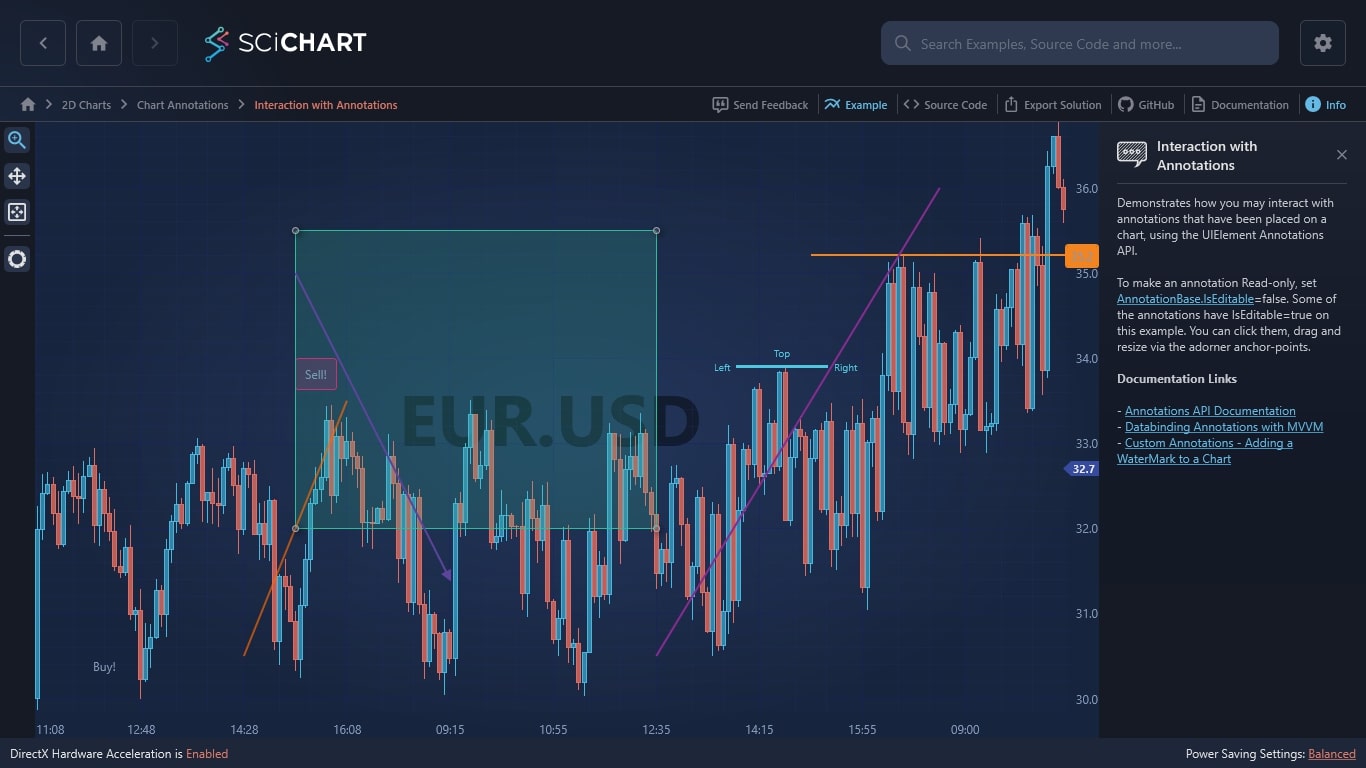WPF Chart - Examples
SciChart WPF ships with hundreds of WPF Chart Examples which you can browse, play with, view the source-code and even export each WPF Chart Example to a stand-alone Visual Studio solution. All of this is possible with the new and improved SciChart WPF Examples Suite, which ships as part of the SciChart WPF SDK.
Demonstrates how you may interact with annotations that have been placed on a chart, using the UIElement Annotations API.
To make an annotation Read-only, set AnnotationBase.IsEditable=false. Some of the annotations have IsEditable=true on this example. You can click them, drag and resize via the adorner anchor-points.
Documentation Links
– Annotations API Documentation
– Databinding Annotations with MVVM
– Custom Annotations – Adding a WaterMark to a Chart
The C#/WPF source code for the WPF Chart Interaction with Annotations example is included below (Scroll down!).
Did you know you can also view the source code from one of the following sources as well?
- Clone the SciChart.WPF.Examples from Github.
- Or, view source in the SciChart WPF Examples suite.
- Also the SciChart WPF Trial contains the full source for the examples (link below).


